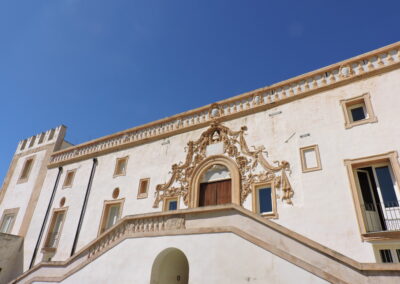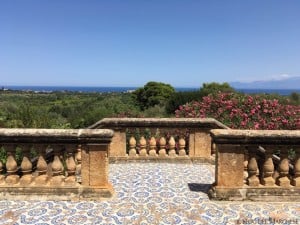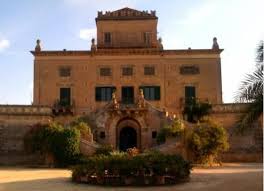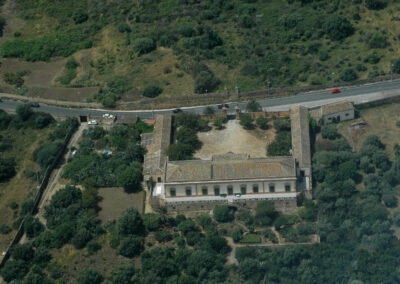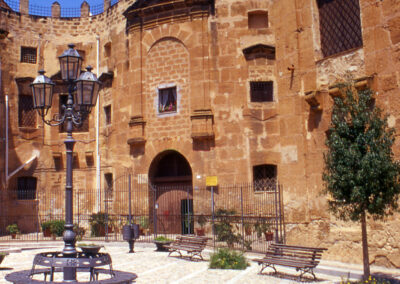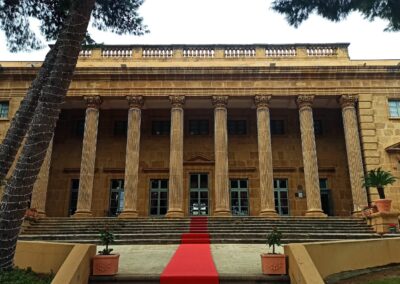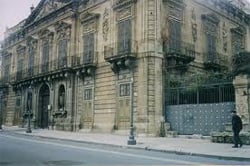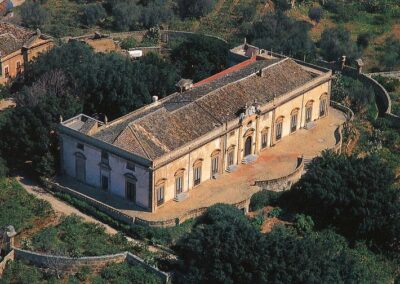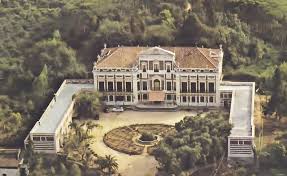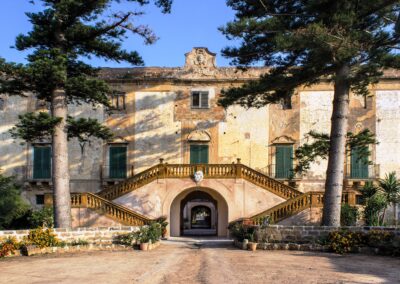Villa Butera
It is the first villa built on the Bagaria plain. It was built in 1658 by Giuseppe Branciforti, prince of Pietraperzia and Leonforte. It was a sort of castle, medieval in style. Protected on both sides by two crenellated towers, it has two large stairways: one on the south front and the other on the east side. The two fronts had a courtyard in front, bordered by low, narrow houses. The portal above the east stairway is sixteenth-century in style. The villa was purchased by the Municipality which set up the representative offices inside for the organization of events such as book presentations. Civil weddings are also celebrated in the splendid Borremans hall. (Visitable)
Timetables and Prices:
The visit is regulated by a system based on two time slots, by reservation.
Guided tours hours : From Monday to Friday first entry at 9.30 and second entry at 11.30.
On Wednesdays, afternoon admission is also possible at 4 pm. Admission 2.00 euros.
To book guided tours, send an email to: turismo@comune.bagheria.pa.it or call 091/943817
In depth
When in 1658 Giuseppe Branciforti, prince of Pietraperzia and Leonforte, knight of the Golden Fleece, after the revolt of Naples with Masaniello and of Palermo with Giuseppe D’Alessi, lost hope of having the throne of Sicily, he decided to retire as a hermit in the lands of Bagheria. For this reason, on the entrance door of the crenellated tower which leads to the palace – not surprisingly facing west, towards Palermo – on the entrance portal, the Prince had an epigraph carved in marble which reads: “To my King in serving what harsh and hard labors didn’t you last constant and strong? And always immersed in important cures from the stars, I suffered various fates”. Among the countryside at last lonely and dark my mind hopes for its own death, while a widower parent by fate here in the meantime I cry and say «Oh court to God»”. On the opposite side, the eastern one, above the main door, there is another marble epigraph which quotes a sonnet by Miguel De Cervantes taken from Galatea: “Ya la esperanza es perdida, y un solo bien me consuela: que el tiempo, que passa y buela, lllevarà life soon”. At that time it was under Spanish rule and plague and famine were killing the people.
After the insurrection of Messina in 1646, Palermo also rose up. The people, who had raised D’Alessi to supreme office, later carried his severed head around. The conspiracies of the plebs, the pitfalls of the nobles, the civil wars induced him to definitively leave his residence in Palermo to choose his lands of Bagheria as his home, which at the time was an almost uncultivated fiefdom. He had a very austere castle built, flanked by two medieval-style crenellated towers. In ancient times, the castle was accessed from the ancient Via Oleandri which crossed the Villarosa and Cordova funds, bordering the famous Certosa of the same Butera, the Vallone De Spucches folding up to Solanto, to continue towards Messina.
The prince had a theater built near the palace, and in the enclosure of the castle a small church which was a branch parish of Palermo from 1708 to 1771, when the Church of the Madrice was built with the growth of the population. Prince Giuseppe Branciforti apparently created the cult of San Giuseppe, now the patron saint of Bagheria, for his name. in 1769 he himself traced Corso Butera, (a large course overlooking the sea of Aspra) to communicate with the Consular road. In April 1774 Vittorio Amedeo II, King of Sicily, stopped at the palace as a guest of Prince Nicola Placido Branciforte. Later, Princess Sofia of Trabia entrusted the palace to the nuns for the maintenance of a kindergarten attended by the children of the people.
The Palace belongs to the Municipality of Bagheria.
In this category

